
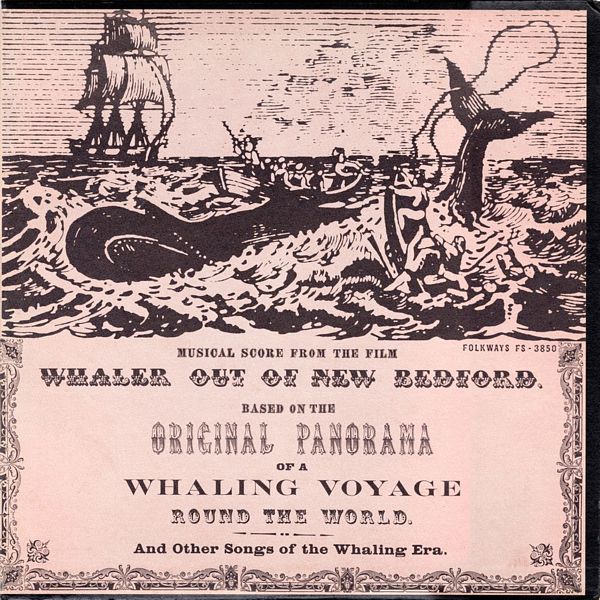 |
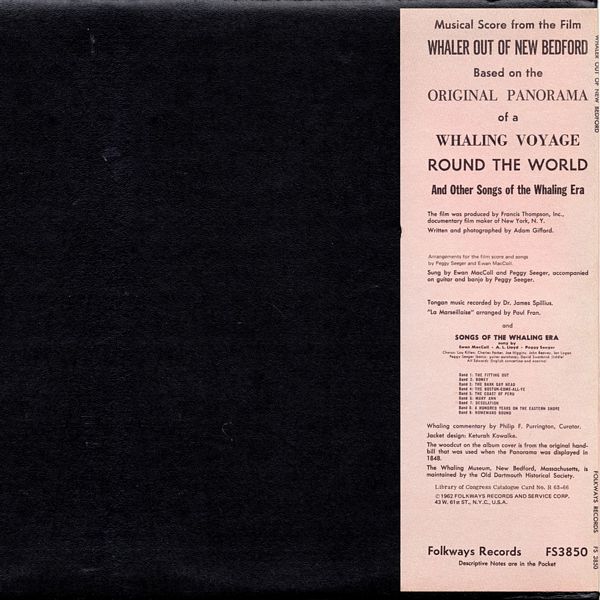
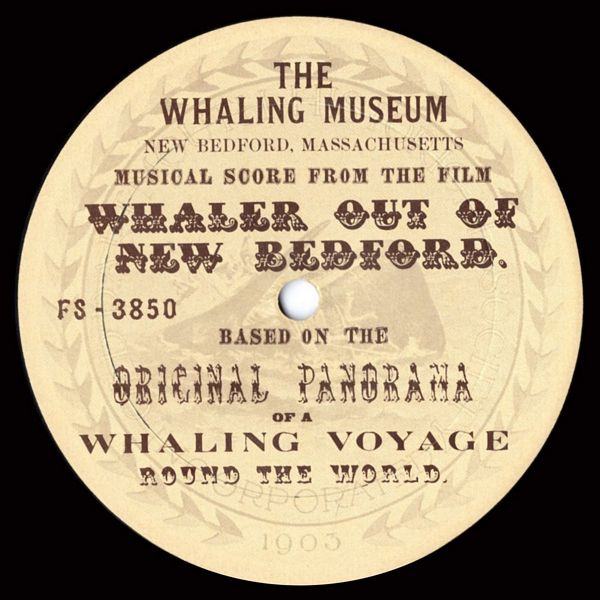
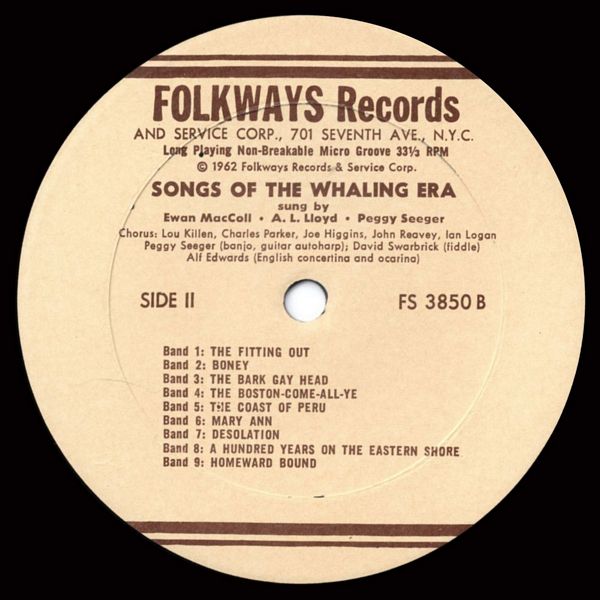 |
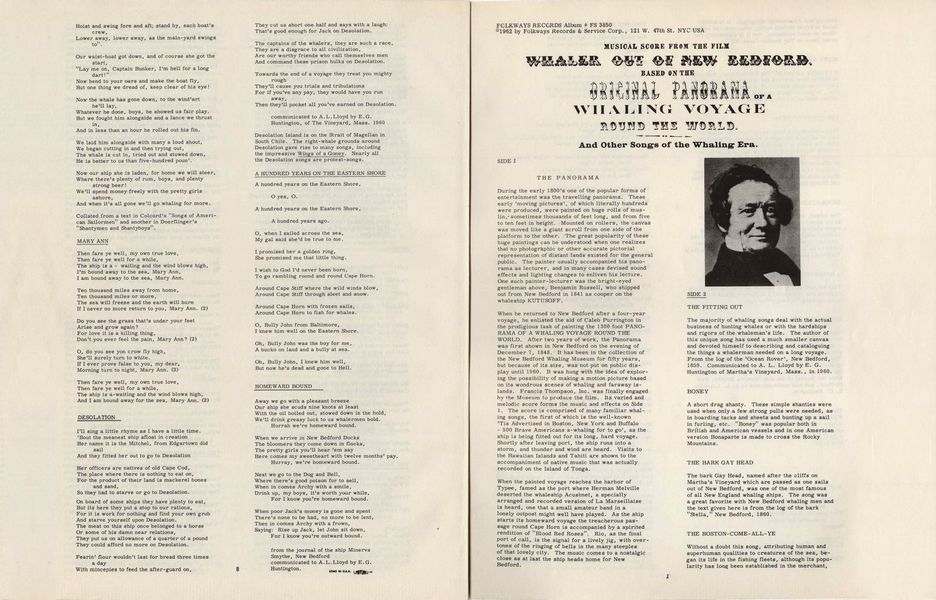
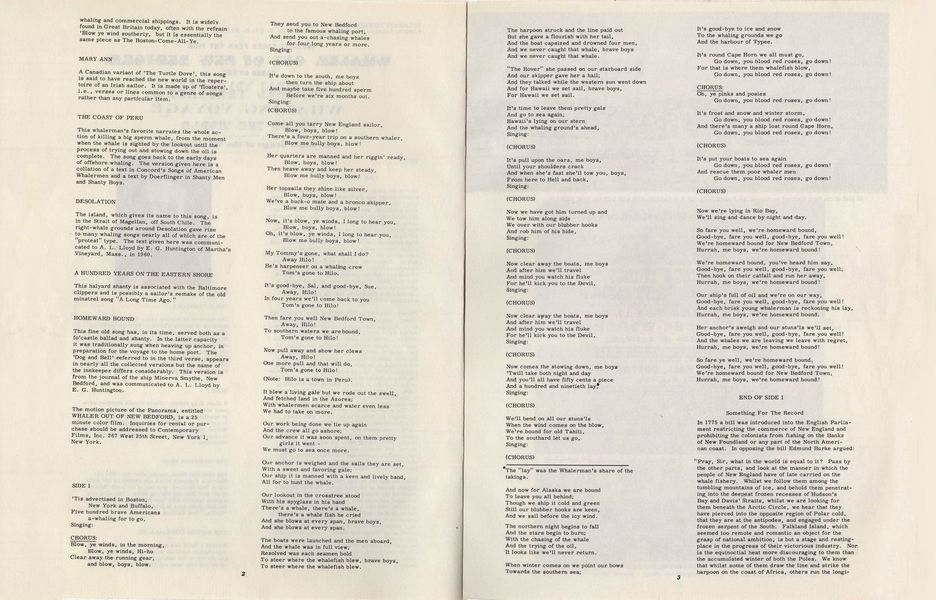 |
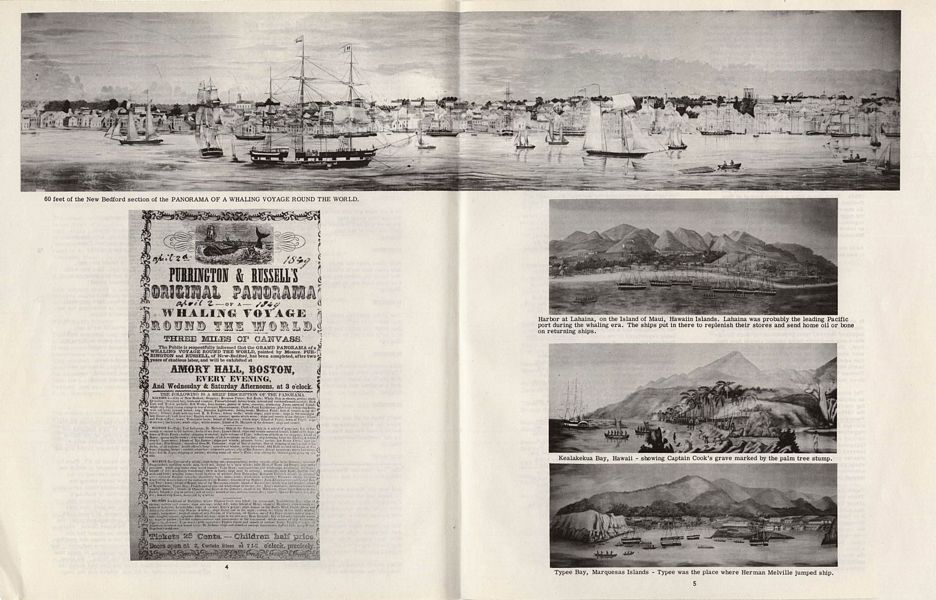
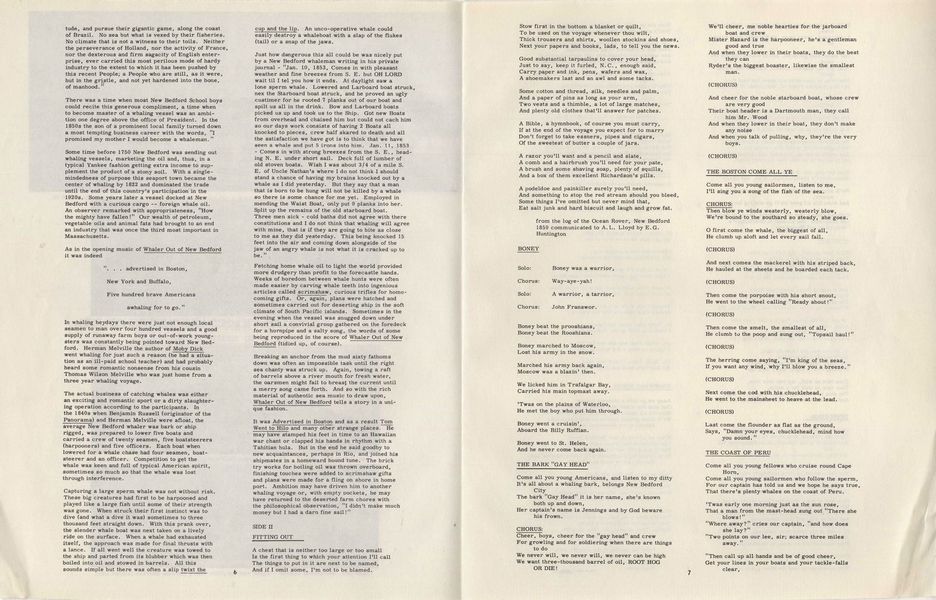 |
Sleeve Notes
SIDE ONE
THE PANORAMA
During the early 1800's one of the popular forms of entertainment was the travelling panorama. These early 'moving pictures', of which literally hundreds were produced, were painted on huge rolls of muslin, sometimes thousands of feet long, and from five to ten feet in height. Mounted on rollers, the canvas was moved like a giant scroll from one side of the platform to the other. The great popularity of these huge paintings can be understood when one realizes that no photographic or other accurate pictorial representation of distant lands existed for the general public. The painter usually accompanied his panorama as lecturer, and in many cases devised sound effects and lighting changes to enliven his lecture. One such painter-lecturer was the bright-eyed gentleman above, Benjamin Russell, who shipped out from New Bedford in 1841 as cooper on the whaleship KUTUSOFF.
When he returned to New Bedford after a four-year voyage, he enlisted the aid of Caleb Purrington in the prodigious task of painting the 1300 foot PANORAMA OF A WHALING VOYAGE ROUND THE WORLD. After two years of work, the Panorama was first shown in New Bedford on the evening of December 7, 1848. It has been in the collection of the New Bedford Whaling Museum for fifty years, but because of its size, was not put on public display until 1960. It was hung with the idea of exploring the possibility of making a motion picture based on its wondrous scenes of whaling and faraway islands. Francis Thompson, Inc. was finally engaged by the Museum to produce the film. Its varied and melodic score forms the music and effects on Side 1. The score is comprised of many familiar whaling songs, the first of which is the well-known 'Tis Advertised in Boston, New York and Buffalo — 500 Brave Americans a-whaling for to go', as the ship is being fitted out for its long, hard voyage. Shortly after leaving port, the ship runs into a storm, and thunder and wind are heard. Visits to the Hawaiian Islands and Tahiti are shown to the accompaniment of native music that was actually recorded on the Island of Tonga.
When the painted voyage reaches the harbor of Typee, famed as the port where Herman Melville deserted the whaleship Acushnet, a specially arranged and recorded version of La Marseillaise is heard, one that a small amateur band in a lonely outpost might well have played. As the ship starts its homeward voyage the treacherous passage round Cape Horn is accompanied by a spirited rendition of "Blood Red Roses". Rio, as the final port of call, is the signal for a lively jig, with overtones of the ringing of bells in the many steeples of that lovely city. The music comes to a nostalgic close as at last the ship heads home for New Bedford.
SIDE TWO
THE FITTING OUT
The majority of whaling songs deal with the actual business of hunting whales or with the hardships and rigors of the whaleman's life. The author of this unique song has used a much smaller canvas and devoted himself to describing and cataloguing the things a whalerman needed on a long voyage. From the log of the 'Ocean Rover', New Bedford, 1859. Communicated to A. L. Lloyd by E. G. Huntington of Martha's Vineyard, Mass., in 1960.
BONEY
A short drag shanty. These simple shanties were used when only a few strong pulls were needed, as in boarding tacks and sheets and bunting up a sail in furling, etc. "Boney" was popular both in British and American vessels and in one America] version Bonaparte is made to cross the Rocky Mountains.
THE BARK GAY HEAD
The bark Gay Head, named after the cliffs on Martha's Vineyard which are passed as one sails out of New Bedford, was one of the most famous of all New England whaling ships. The song was a great favorite with New Bedford whaling men and the text given here is from the log of the bark "Stella," New Bedford, 1860.
THE BOSTON-COME-ALL-YE
Without a doubt this song, attributing human and superhuman qualities to creatures of the sea, began its life in the fishing fleets, although its popularity has long been established in the merchant, whaling and commercial shippings. It is widely found in Great Britain today, often with the refrain 'Blow ye wind southerly, but it is essentially the same piece as The Boston-Come-All-Ye.
MARY ANN
A Canadian variant of 'The Turtle Dove', this song is said to have reached the new world in the repertoire of an Irish sailor. It is made up of 'floaters', i.e., verses or lines common to a genre of songs rather than any particular item.
THE COAST OF PERU
This whalerman's favorite narrates the whole action of killing a big sperm whale, from the moment when the whale is sighted by the lookout until the process of trying out and stowing down the oil is complete. The song goes back to the early days of offshore whaling. The version given here is a collation of a text in Concord's Songs of American Whalermen and a text by Doerflinger in Shanty Men and Shanty Boys.
DESOLATION
The island, which gives its name to this song, is in the Strait of Magellan, off South Chile. The right-whale grounds around Desolation gave rise to many whaling songs nearly all of which are of the "protest" type. The text given here was communicated to A. L. Lloyd by E. G. Huntington of Martha's Vineyard, Mass., in 1960.
A HUNDRED YEARS ON THE EASTERN SHORE
This halyard shanty is associated with the Baltimore clippers and is possibly a sailor's remake of the old minstrel song "A Long Time Ago."
HOMEWARD BOUND
This fine old song has, in its time, served both as a fo'castle ballad and shanty. In the latter capacity it was traditionally sung when heaving up anchor, in preparation for the voyage to the home port. The 'Dog and Bell' referred to in the third verse, appears in nearly all the collected versions but the name of the innkeeper differs considerably. This version is from the journal of the ship Minerva Smythe, New Bedford, and was communicated to A. L. Lloyd by E. G. Huntington.
The motion picture of the Panorama, entitled WHALER OUT OF NEW BEDFORD, is a 25 minute color film. Inquiries for rental or purchase should he addressed to Contemporary Films, Inc. 267 West 25th Street, New York 1, New York.